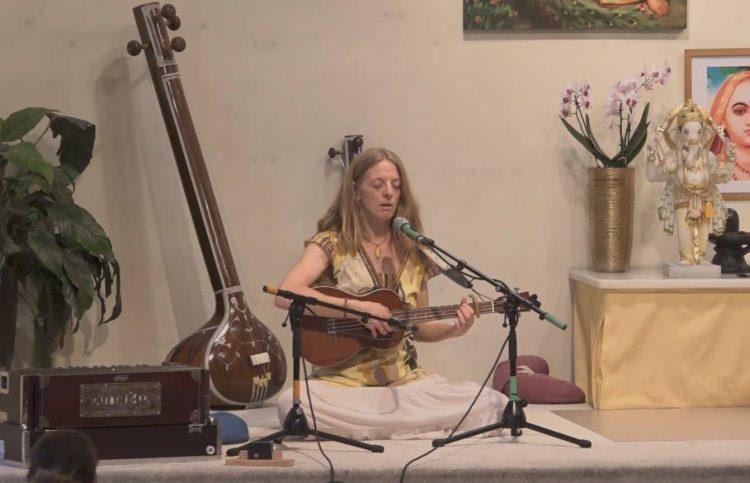Introduction: Where Does Anxiety Live in the Energy Body?
Anxiety is often treated through psychological or pharmacological means, but ancient healing systems suggest it might also be an energetic imbalance. Eastern traditions like yoga and Ayurveda speak of chakras—spinning energy centers within the body—as governing not just physical organs but also emotional states. Could understanding your chakra system help you decode the energetic roots of anxiety? This article explores how practices like reiki, chakra balancing, and subtle energy work may contribute to emotional regulation and anxiety relief.
Understanding Chakras: A Map of Emotional Energy
The chakra system, originating from early Indian spiritual texts, describes seven primary energy centers aligned along the spine. Each chakra is associated with specific physical, emotional, and psychological characteristics. From the grounded security of the root chakra to the expansive wisdom of the crown, these centers interact with our emotional health in subtle but powerful ways. Anxiety, being a complex emotional state, may be linked to blockages or imbalances in more than one chakra.
Anxiety and the Root Chakra: Safety and Survival
The root chakra, or Muladhara, is located at the base of the spine and governs feelings of safety, security, and stability. Chronic anxiety often stems from a perceived threat to these basic needs. When this chakra is out of balance, individuals may feel ungrounded, constantly on edge, or fearful about the future. Practices to balance this chakra include grounding exercises, connecting with nature, and using red gemstones or essential oils like patchouli and cedarwood.
The Solar Plexus Chakra: The Seat of Control and Identity
Anxiety is often tied to a loss of control or fear of inadequacy. The solar plexus chakra (Manipura), located around the upper abdomen, is linked to personal power, confidence, and will. When this chakra is overactive, it can manifest as perfectionism, overthinking, or control issues—hallmarks of high-functioning anxiety. Breathwork, core-strengthening movement, and visualization of golden light can help restore balance to this energy center.
The Heart Chakra: Emotional Vulnerability and Protection
Sometimes, anxiety is rooted not in external fear but in internal emotional pain. The heart chakra (Anahata) governs love, empathy, and connection. Blockages here may result in emotional withdrawal, trust issues, or hypersensitivity to rejection. People with anxiety centered in the heart chakra may experience chest tightness or difficulty breathing. Reiki sessions focused on the heart, rose quartz, and gentle practices like self-compassion meditations can support healing.

Energy Healing Modalities: How Reiki and Chakra Work Help
Reiki, a Japanese energy healing technique, works by channeling universal life energy through the hands of the practitioner into the client’s energy field. It’s non-invasive and often described as calming and emotionally soothing. During a reiki session, practitioners may feel energetic blocks in specific chakras and help release stagnant energy. Similarly, chakra balancing techniques—using tuning forks, crystals, or guided meditation—aim to align and harmonize the chakra system. Though evidence remains largely anecdotal, many people report reduced anxiety, deeper sleep, and emotional release after sessions.
Scientific Curiosity vs. Ancient Wisdom: Where They Meet
Mainstream science does not yet fully endorse chakra healing or reiki, due to challenges in quantifying subtle energy. However, researchers are beginning to study how energy-based modalities affect the nervous system. Heart rate variability, cortisol levels, and brainwave patterns have all shown positive shifts in individuals receiving reiki or similar practices. These changes suggest activation of the parasympathetic nervous system—our “rest and digest” mode—which is crucial for anxiety reduction.
The Polyvagal Connection: Energy Work and Vagal Tone
Polyvagal theory, which describes how the vagus nerve regulates emotional and social behavior, aligns surprisingly well with chakra-based healing. Many chakra practices—like slow breathing, chanting, or placing hands over the chest—activate the vagus nerve and promote regulation. This may explain why people feel deeply relaxed or emotionally lighter after energy sessions: the nervous system itself is being soothed through multisensory engagement.
How to Tell If Your Chakras Are Out of Balance
Chakra imbalances often manifest as recurring emotional patterns or physical sensations. For example, a person with an overactive solar plexus might be driven to overachieve but never feel satisfied, while someone with an underactive throat chakra may struggle to speak up, leading to internalized stress. Listening to your body’s emotional responses, keeping an energy journal, or working with a certified practitioner can help identify where imbalances lie.
Daily Practices for Energetic Anxiety Relief
You don’t need to be an expert to begin balancing your chakras. Small, intentional practices can shift energy and reduce anxiety. Grounding the root chakra might involve walking barefoot outdoors. Singing or humming can strengthen the throat chakra and calm the nervous system. Using colored visualizations, crystal grids, or aromatherapy aligned with specific chakras can make these routines more powerful. The key is consistency and mindful presence.
Cultural Appropriation vs. Respectful Practice
When working with chakra systems or reiki, it’s important to honor the cultural roots of these traditions. Chakra wisdom stems from ancient Indian philosophies, and reiki has deep roots in Japanese spiritual practice. Approaching these tools with humility, respect, and informed study helps preserve their integrity and prevents their dilution into commodified “wellness fads.”
Integrating Chakra Healing with Conventional Therapy
Chakra work need not replace traditional mental health treatment. In fact, many therapists are beginning to integrate somatic and energetic tools into their practices. Therapists trained in trauma-informed care, somatic experiencing, or holistic counseling may incorporate breathwork, body scanning, and visualization that echoes chakra work. This integrative approach can support both cognitive and emotional healing.
Conclusion: Is Anxiety a Message from Your Energy Body?
Perhaps anxiety isn’t just a mental condition—it might be an energetic signal that something within your body’s wisdom system is out of sync. Exploring the chakra system offers a non-linear, intuitive lens for emotional healing—one that sees anxiety not as a flaw but as an invitation to reconnect with your inner power, breath, and balance. As ancient traditions and modern science slowly converge, the bridge between energy and emotion continues to grow stronger—and more hopeful.











































